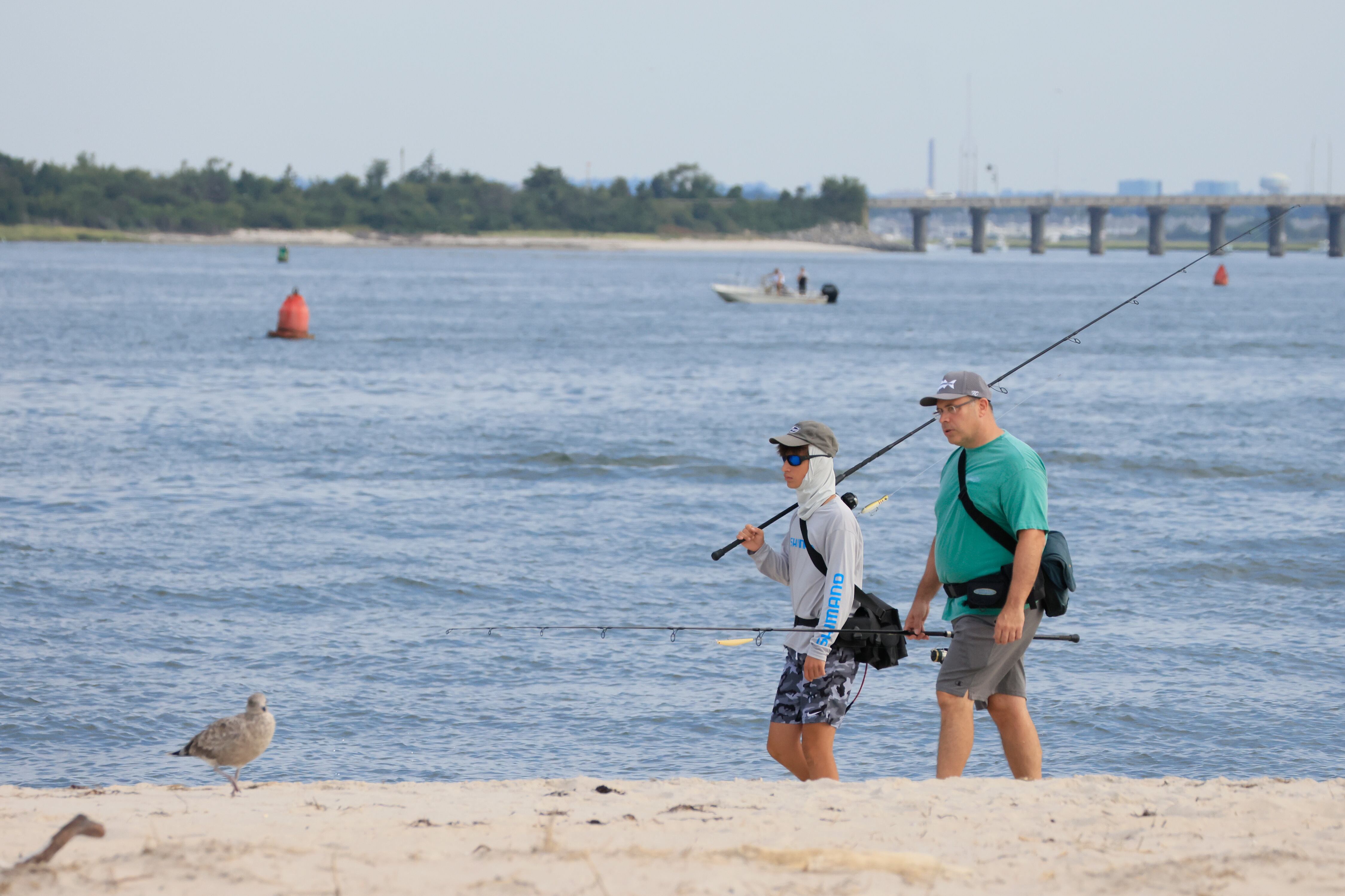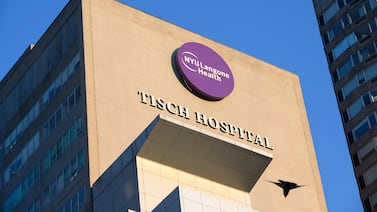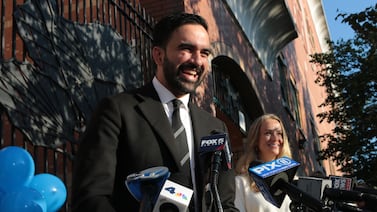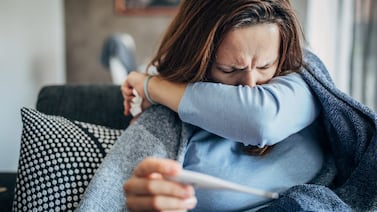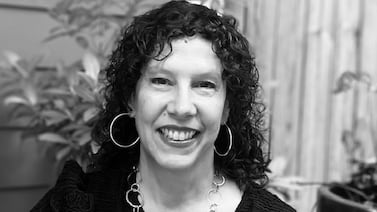This article originally appeared at Your Local Epidemiologist New York. Sign up for the YLE NY newsletter here. Public health, explained: Sign up to receive Healthbeat’s free New York City newsletter here.
There’s a ton going on in the world of public health. This week we’ll cover wildfire smoke in New York, an emerging Covid variant, updates to Covid vaccine eligibility, diabetes in New Yorkers, and an advisory on local fish consumption.
Wildfire smoke in New York
Smoke from wildfires in Canada has made its way down to New York and surrounding states.

Poor air quality from wildfire smoke poses health risks to everyone, but some groups are especially sensitive:
- Older adults
- Pregnant women
- Children
- People with pre-existing respiratory and heart conditions
Air quality is measured by sensors that detect the concentration of pollutants in the air. Results are reported as the Air Quality Index, which is a number between 0 and 500. The higher the AQI, the more polluted the air is, and the higher the health risk. When the AQI exceeds 50 (the yellow category), people who are more sensitive to poor air quality should reduce strenuous activity outdoors (like working out). Once the AQI tops 100 (the orange category), everyone should reduce strenuous activity outdoors.
You can easily check the air quality of your local area on some weather apps, like AirNow, or download the EPA’s AirNow mobile app. And for a deeper dive on wildfire smoke, check out our post from last year.
New Covid variant in NYC
A new Covid variant has been detected in international travelers who arrived to New York City airports this month, as well as other airports in the United States. The new variant, NB.1.8.1, is getting some attention because it’s the major variant associated with a surge in Covid cases in China.
The good news is that this variant doesn’t appear to be any more severe than other circulating variants — it’s not meaningfully better at evading the immune system. The reason China may be seeing more Covid cases is not entirely clear, but we do see that this variant grows faster than many other circulating variants in cell culture, meaning it may be more transmissible.
What does this mean for you?
In New York, and the rest of the United States, we can expect another Covid wave this summer, with things likely picking up in the next two to three weeks. We’ve had summer Covid waves the past four summers, so it’s expected at this point.
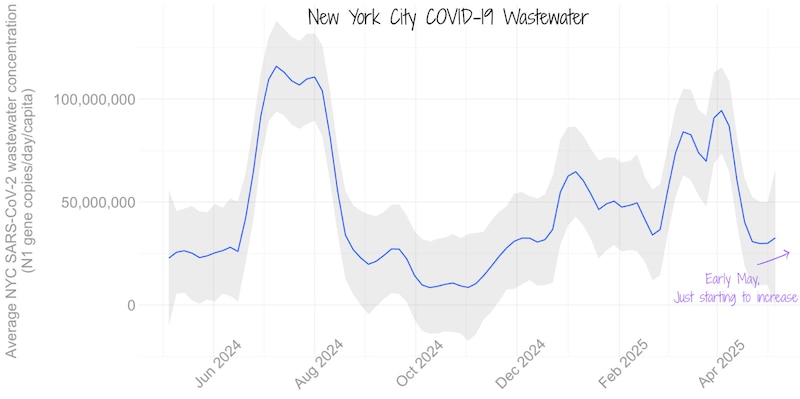
Wastewater data for New York City is delayed, with the most recent data available as of May 6. The most recent data show that Covid began increasing earlier in May, but it was still at low levels in New York City. I’ll be back with updates once we get more data.
Will the current vaccine be effective against this new strain?
We think so. The new NB.1.8.1 strain seems to evade antibodies similarly to the last two strains vaccines were developed for, JN.1 and KP.2, meaning that the current vaccine should offer protection against severe disease. If you are moderately or severely immunocompromised or over 65, and you got a Covid vaccine in the fall, you can talk to your doctor about getting a second dose. I got the fall vaccine last year, so personally, I am not going to get another shot until this fall. But, I will be paying close attention to the Covid data (and sharing it here) and will likely mask up on the train and in grocery stores once virus activity starts to pick up more.
Covid vaccines will still be available for kids and pregnant women in New York
In last week’s post, we covered new proposed guidelines for Covid vaccines that would make it harder for adults and kids without chronic conditions to get vaccinated if they want to. Late last week, the Centers for Disease Control and Prevention released recommendations based on the proposal.
The communication over the vaccine guidelines was a total mess and is still confusing as heck (YLE National covered it here). After it was initially announced that Covid vaccines would not be recommended for healthy kids and pregnant women, the CDC walked that back, and are now recommending that kids, pregnant women, and all adults can still get vaccinated if they and their doctor agree it’s appropriate (called shared clinical decision-making).
Covid vaccine eligibility as of now:
- Age 65+: Vaccines are recommended.
- Under age 65 with certain health conditions: Vaccines are recommended.
- Adults, kids, and pregnant women may get the vaccine if they and their clinician agree it’s appropriate.
This is a win because little kids, particularly those under 6 months old, and pregnant women are still at high risk of severe Covid. Babies continue to make up the most emergency department visits for Covid (even more so than older adults). It also upholds medical freedom and the choice to get vaccinated if one wants to.
The CDC requires insurance to cover kids’ shots that are recommended by shared clinical decision-making. But for adults, insurance coverage is still up in the air. When ACIP (an independent group of advisers to the CDC) meets at the end of June to make their recommendations, they’ll vote on whether Covid vaccines should be recommended for healthy adults, and this will likely dictate insurance coverage.
Diabetes is high in NYC
The NYC Health Department released a report last week showing just how deeply diabetes, one of the most common chronic diseases, affects New Yorkers. In New York City, and the rest of the United States, diabetes is a leading cause of illness, disability, and death.
In 2022, about 11% of the New York City adult population (800,000 New Yorkers) had diabetes. Statewide, it’s similar — 11.4% of New Yorkers have diabetes.
And risk is not evenly spread. Diabetes is highest among older adults, with 26% of New York City adults over 65 having diabetes. The risk of diabetes increases with age — as people get older, the body’s ability to produce insulin declines, muscle mass decreases, and many will have reduced physical activity, all of which contribute to insulin resistance.
Asian/Pacific islander, Black, and Latino New Yorkers have nearly twice the rate of diabetes compared to white New Yorkers. Diabetes risk among racial and ethnic groups is a combination of genetic, environmental, and socioeconomic factors.
Poverty and access to healthy food play a huge role in diabetes risk. NYC residents in high poverty neighborhoods (15%) were almost twice as likely to have diabetes as residents in low poverty neighborhoods (8%). People from lower-income households may not have access to healthy food options (often more expensive) or opportunities to exercise regularly in their communities.
How do we fix this issue?
It’s a complex issue, but more funding and smart investments would help. Diabetes, like many other chronic diseases, is shaped by a person’s environment. Do they have time to cook? Safe spaces to exercise? Access to regular medical care? These are material and environmental conditions, not just personal choices.
Lifestyle interventions, like the National Institutes of Health’s Diabetes Prevention Program (which sadly lost its funding recently) can be very effective. Here’s what we as individuals can keep in mind to reduce risk:
- Get regular checkups that include lab work — prediabetes can be reversed with early action.
- Strive for a balanced diet — emphasizing protein, fiber-rich carbohydrate foods, and healthy fats.
- Stay physically active — exercise benefits blood sugar, insulin sensitivity, and weight management.
- Manage weight — if you are carrying excess weight, just losing 5%-10% of your body weight has been shown to have substantial benefits.
New York City’s Health Department has laid out a Citywide Diabetes Reduction Plan that calls for evidence-based programs, such as peer-led education, community health workers, support for healthy food, and self-management services.
Having a plan is great, but the NYC Diabetes Report highlights that the plan’s initiatives are not yet funded at levels needed to reach all New Yorkers who could benefit. We also need long-term solutions that enable people to afford healthier lifestyles. For example, Medicaid and Medicare reimbursement of diabetes prevention and self-management programs, as well as investments in efforts that address the root causes, such as housing, transportation, and food access.
We have the blueprint. Now we need the resources to scale it.
A big thank you to Megan Maisano, MS, RDN, for her expert insight and contribution to this section.
New York advisory on fish contamination
Did you know it’s striped bass season in New York? My dad used to take me fishing when I was little as a way to connect with nature. It’s a great family activity, but some fish can accumulate pollutants from their environment, which can be dangerous if consumed in high amounts.
Last week, New York State Department of Health announced an advisory on which fish from New York state bodies of water are safe to eat, and which ones should be avoided. Some fish in New York have high levels of chemicals that can be harmful, including mercury, polychlorinated biphenyls, and PFAS.
The state is divided into four different water regions, each with its own fish consumption guidelines.
There are different guidelines based on who you are, where you fish, what you catch, and how much fish you eat. Chemicals in fish can have a greater effect on children’s development and babies, so women of childbearing age (under 50) and children under 15 are advised to limit the kinds of fish they eat and how often they eat them. The chemicals from fish can also build up in the body and affect the development of future pregnancies, so women who may become pregnant should limit their consumption of riskier fish.
In addition to the New York-specific guides, the Food and Drug Administration also has recommendations on which fish are safe to eat for women and children.
What you can do
If you fish in New York, look up the guidance for your local fishing spot. Avoid eating the fish listed as not safe to consume. If you are eating out, you can ask where fish was sourced from.
Eating fish can be part of a healthy diet, providing key nutrients like high-quality protein, omega-3 fatty acids, and iron. And not all fish are risky to consume. Fishing can still be a fun activity for the family, but equipping yourself with knowledge of your local environment can help you make healthy decisions about how much fish to eat and from where.
Bottom line
You’re all caught up on New York public health this week. We’ll be back next week with some info on the New York City mayor’s election and how it could influence public health. Stay tuned!
Love,
Your NY Epi
Dr. Marisa Donnelly, PhD, is an epidemiologist, science communicator, and public health advocate. She specializes in infectious diseases, outbreak response, and emerging health threats. She has led multiple outbreak investigations at the California Department of Public Health and served as an Epidemic Intelligence Service Officer at the Centers for Disease Control and Prevention. Donnelly is also an epidemiologist at Biobot Analytics, where she works at the forefront of wastewater-based disease surveillance.

